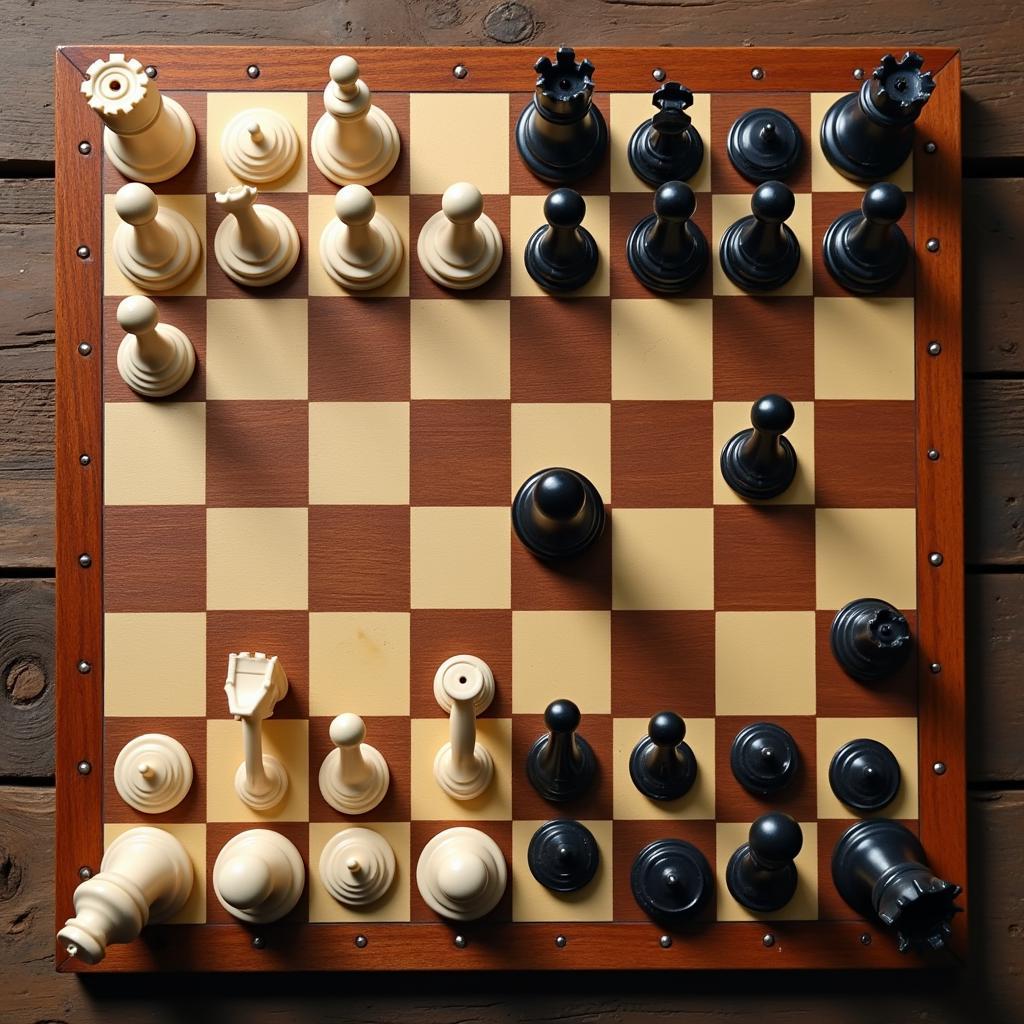The age-old question, what chess piece can only move on one color, has puzzled many a chess enthusiast. The answer is surprisingly simple: the bishop. This intriguing limitation significantly impacts the bishop’s role and strategic value in the game of chess. Understanding this constraint is key to mastering chess strategy and tactics.
The Bishop’s Color Confinement: A Deep Dive
The bishop, unlike other chess pieces like the rook or queen, is restricted to diagonals. This inherent characteristic dictates that a bishop starting on a light square will forever remain on light squares, and vice versa for a dark-square bishop. This seemingly simple rule has profound implications for gameplay.
Why the Bishop is Colorbound
A chessboard is composed of alternating light and dark squares. As the bishop moves diagonally, it invariably lands on a square of the same color it started on. This phenomenon arises from the geometrical nature of diagonal movement on a checkered board. Imagine a bishop on a white square. Every diagonal move it makes will land it on another white square. The same logic applies to a bishop starting on a black square.
 Bishop Movement on Chessboard
Bishop Movement on Chessboard
Strategic Implications of the Bishop’s Color Limitation
The bishop’s color confinement leads to interesting strategic considerations. Having two bishops, one controlling light squares and the other dark squares, provides a significant advantage. This “bishop pair” can exert pressure across the entire board, complementing each other’s reach.
The Power of the Bishop Pair
The bishop pair is often considered more powerful than a knight and bishop, or two knights. This is because the bishops can control more squares and exert influence from a distance. However, the inherent weakness of each individual bishop being limited to one color needs to be managed carefully.
 Chess Bishop Pair Advantage
Chess Bishop Pair Advantage
Mastering the Bishop: Tips and Tricks
Understanding the bishop’s color limitation is crucial for effective chess play. Here are a few tips to maximize the bishop’s potential:
- Control the center: Aim to control the center squares with your bishops, especially in the opening and middlegame.
- Develop your bishops early: Don’t keep your bishops trapped behind pawns. Develop them early to influence the game.
- Coordinate your bishops: If you have the bishop pair, make sure they work together harmoniously, covering each other’s weaknesses.
- Beware of weak squares: If you have only one bishop, be mindful of the squares of the opposite color, as they can become weak points in your position.
Conclusion
The bishop, restricted to moving only on one color, plays a unique and vital role in chess. Understanding this limitation and its strategic implications is essential for any chess player aspiring to improve their game. Mastering the bishop’s power and mitigating its weaknesses is a key step towards chess mastery. What chess piece can only move on one color? The bishop, of course! Its color-bound movement defines its strategic significance, making it a fascinating piece to understand and utilize effectively.
FAQ
- What is the weakest piece in chess? While all pieces have their value, the pawn is generally considered the weakest due to its limited movement.
- Can a bishop ever change color? No, a bishop remains on the same color square throughout the game.
- What is the most powerful piece in chess? The queen is the most powerful piece due to its wide range of movement.
- How many bishops does each player start with in chess? Each player starts with two bishops, one on a light square and one on a dark square.
- What is the bishop pair in chess? The bishop pair refers to having both bishops on the board, controlling both light and dark squares.
- How can I improve my chess skills? Practice, study, and analyze your games to identify areas for improvement.
- Are bishops more powerful than knights? The relative strength of bishops and knights depends on the specific position, but the bishop pair is generally considered stronger than two knights or a knight and bishop.
Related Articles
- Understanding Chess Piece Movement
- Basic Chess Strategies for Beginners
- Advanced Chess Tactics
Need help with your chess game or want to learn more about our services? Contact us at Phone Number: 0373298888, Email: SEO.backlink@gmail.com or visit us at 86 Cầu Giấy, Hà Nội. Our customer service team is available 24/7.

